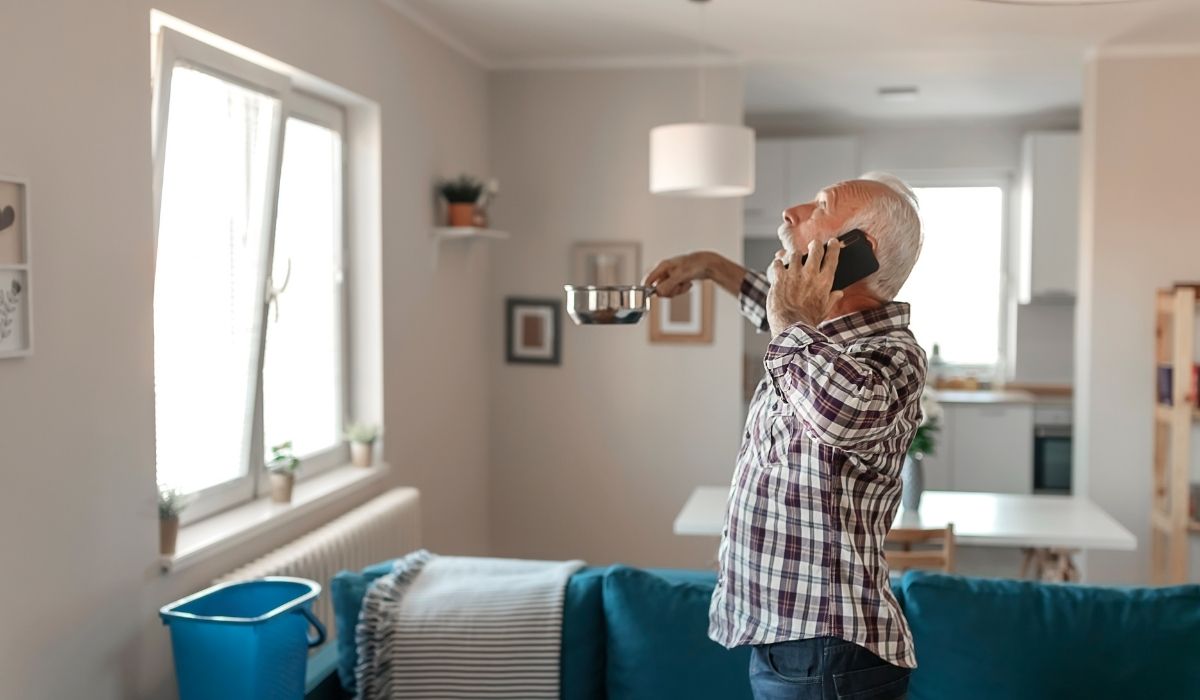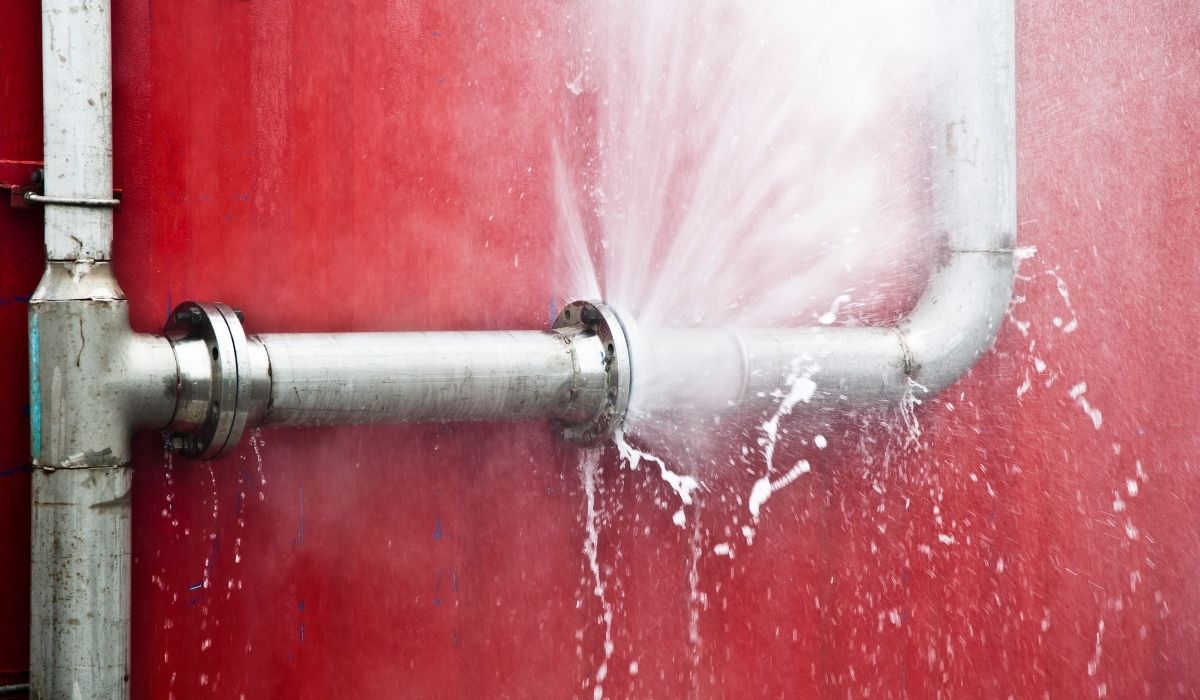How to Interpret Water Damage Categories and Classes Clearly
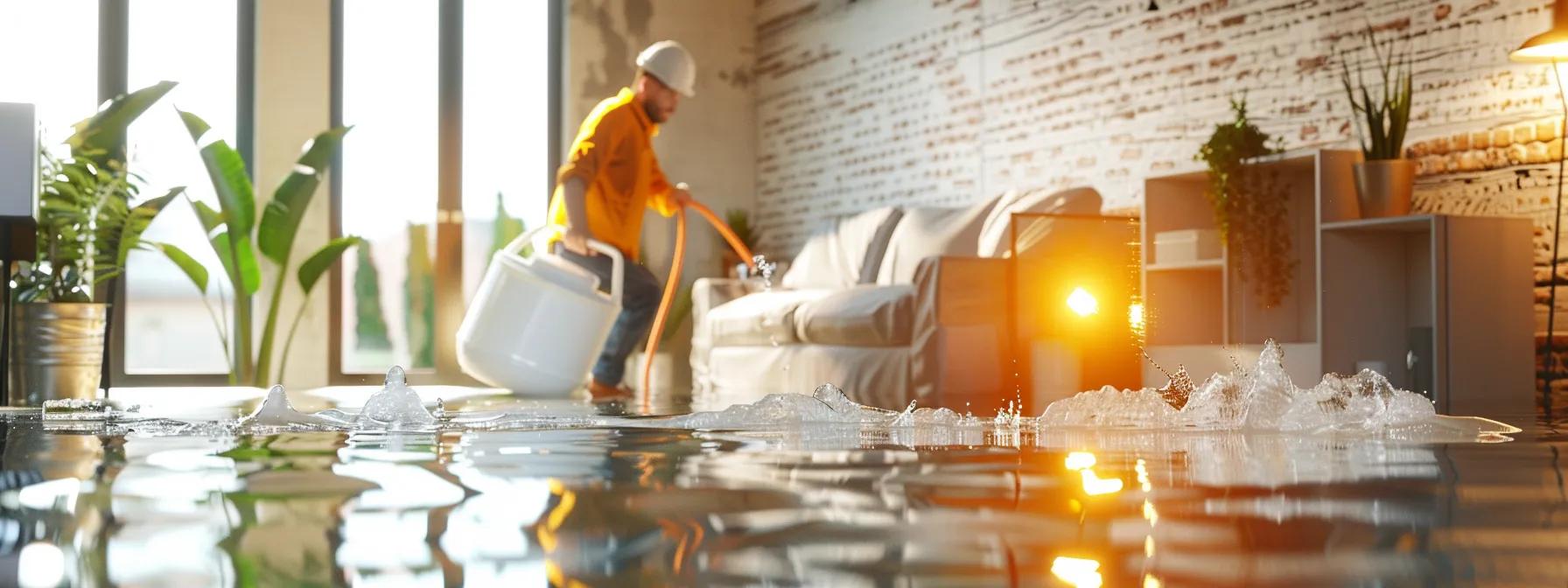
Understanding Water Damage Categories and Classes
Water damage is a critical issue for homeowners and property managers, with implications spanning from structural integrity to health risks. When water infiltrates a building, its effects can vary dramatically based on contaminants, duration, and the amount of saturation. This article aims to provide an in‐depth understanding of water damage categories and classes, helping property owners navigate the complexities of remediation and restoration. Drawing on industry standards and scientific research, the article explains how categorizing water damage can inform the appropriate cleanup techniques and restoration approaches. It also includes detailed examples, peer-reviewed research findings, and actionable steps to mitigate risks associated with water intrusion. Homeowners will gain valuable insights into identifying various levels of water damage—from clear water intrusions to contaminated water scenarios—ensuring that they take timely and effective measures. In addition, this article highlights the importance of understanding both water damage categories and classes so that the restoration process becomes more efficient and the hazards are properly managed. With topics covering the definitions, significance, and practical steps for water damage restoration, property owners can better protect their investments and health. The discussion below breaks down these topics into several detailed sections, beginning with an explanation of water damage categories.
Defining Water Damage Categories
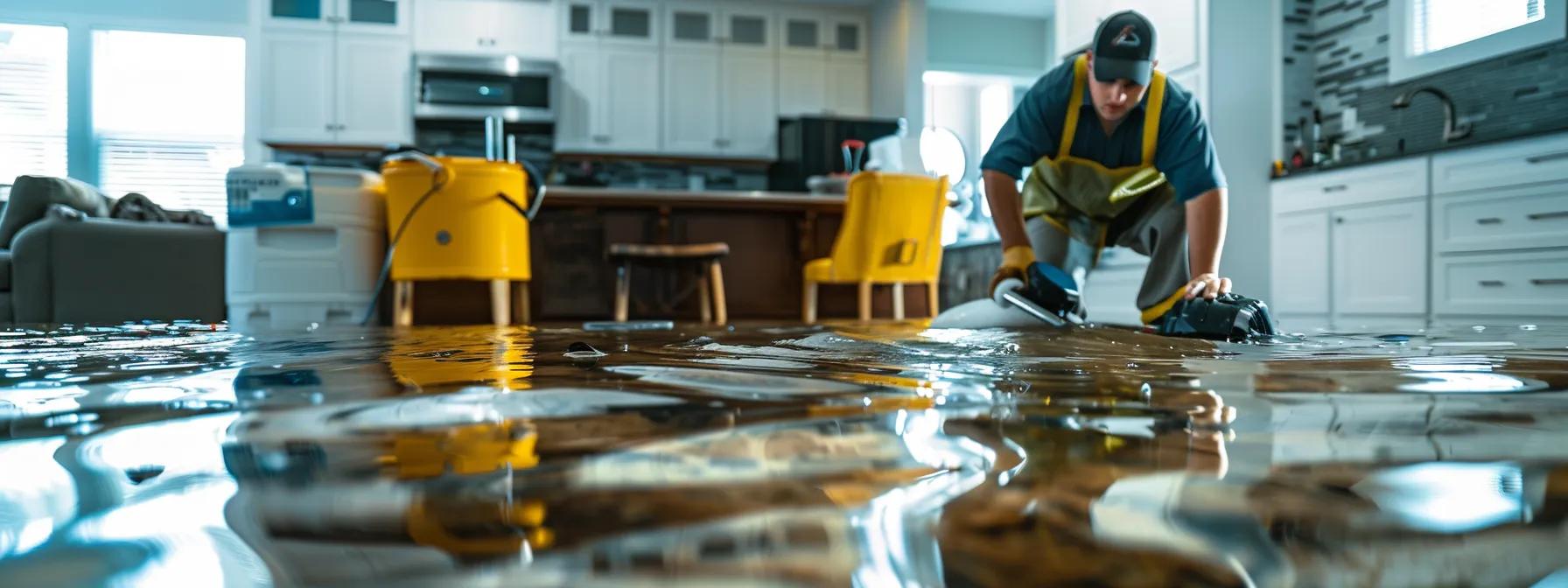
Water damage categories are determined by the level of contamination present in the water after an intrusion event. These categories guide restoration professionals as they decide which safety measures, cleaning procedures, and equipment are needed. Leading industry guidelines, such as those from the Institute of Inspection, Cleaning and Restoration Certification (IICRC), set the framework for these classifications. Understanding these categories is crucial, as each one represents a different level of risk and requires a particular restoration approach.
Category 1 Water Damage Explained
Category 1 water damage involves clean water from sources such as broken water supply lines, melting ice, or rainwater. Despite its initial clarity, even Category 1 water can quickly become hazardous if it remains stagnant and begins to accumulate organic matter, leading to mold growth or bacterial contamination. Studies have shown that water extraction performed within one hour of exposure significantly reduces secondary damage, such as mold, mildew, and deterioration of building materials. This type of damage typically requires basic drying techniques and dehumidification. Restoration professionals might use portable dehumidifiers and air movers to expedite the drying process and prevent further structural damage.
Characteristics of Category 2 Water Damage
Category 2 water damage, often referred to as “gray water” contamination, includes water that has impurities and contains a moderate level of contaminants. This type of water is commonly associated with washing machine overflows, toilet flushes (with no fecal matter), and seepage from natural water sources containing organic matter. The presence of contaminants in Category 2 water increases the potential for bacterial growth and requires careful handling by restoration experts. Key characteristics include discoloration, a noticeable odor, and the potential to cause minor illnesses if contact occurs. Moreover, this category may cause damage to porous building materials such as carpet, drywall, and particle board if not addressed promptly.
Identifying Category 3 Water Damage
Category 3 water damage refers to highly contaminated water, often known as “black water.” This water is derived from sewer leaks, flooding from rivers or streams, or stagnant water containing significant organic and microbial hazards. Category 3 water contains pathogens, toxins, and heavy organic contaminants that pose severe health risks, including infections and toxic exposures. For instance, viruses, bacteria, and even parasites can thrive in this environment. In addition to extensive health risks, the presence of black water can lead to irreversible damage to structural materials, flooring, and furnishings. These scenarios demand full personal protective equipment (PPE) for technicians and rigorous decontamination procedures to prevent health hazards and cross-contamination.
How Water Damage Categories Can Change
Water damage categories are not always static and can change over time. For instance, water that is initially Category 1 may deteriorate to a Category 2 or 3 if it remains undisturbed, allowing contaminants from the environment to interact with the water. Factors such as temperature, duration of water exposure, and the type of materials present in the affected area can influence these shifts. Exposure to environmental elements may introduce bacteria, organic matter, or chemical contaminants that elevate the water’s hazard level. Restoration professionals monitor these variables closely, utilizing moisture meters, infrared cameras, and lab tests to determine if water has shifted categories before deciding on a remediation strategy.
Health Risks Associated With Each Water Damage Category
The health risks posed by water damage depend largely on the category involved. Category 1 water, although initially clean, can become a breeding ground for mold if allowed to stagnate. Category 2 water, with its moderate level of contaminants, increases the likelihood of skin irritations, respiratory problems, and gastrointestinal infections if ingested. Category 3 water is particularly dangerous, with severe risks such as serious infections, toxic exposure, and long-term illnesses. Exposure to pathogens found in contaminated water can lead to conditions such as Legionnaires’ disease, hepatitis, or other waterborne diseases. Therefore, rapid intervention and the use of appropriate personal protective equipment (PPE) are essential to safeguard human health.
Key Takeaways: – Water damage is categorized based on the contamination level: clean, moderately contaminated, or heavily contaminated. – Category 1 is low risk, while Category 3 poses significant health hazards. – Contamination levels may change over time if water is not promptly remediated. – Health risks range from minor irritations in Category 1 to severe infections in Category 3.
Exploring Water Damage Classes
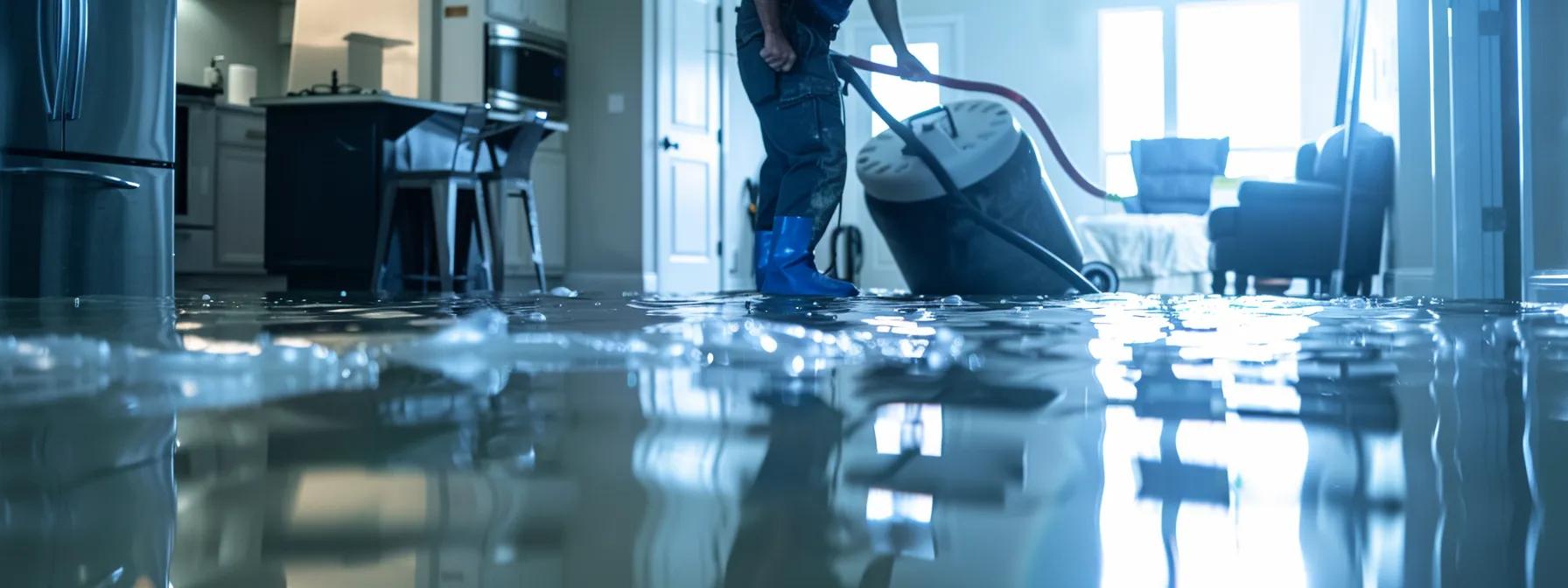
While water damage categories address the contamination level, water damage classes focus on the amount of water absorption and the potential for damage to various structures and materials. The class system helps restoration professionals determine the extent of saturation and the necessary drying equipment to be used. Classes vary depending on the types of materials affected (e.g., porous or nonporous surfaces) and the overall impact on the building’s structure. This distinction is critical for planning an effective remediation process and ensuring that drying is both efficient and sufficient to prevent mold and further degradation.
What Is Class 1 Water Damage
Class 1 water damage is defined by minimal water absorption and limited spread. In this scenario, only part of a room or localized area is affected, with water confined to surfaces that have a low porosity, such as concrete or coated wood. Structural materials are not extensively saturated, allowing for quicker drying times. The restoration process involves basic water extraction and dehumidification methods, often using small air movers. This class poses the least number of challenges in terms of water removal, as the clean water has not seeped deeply into the building materials. The recovery timeline in Class 1 damage is generally shorter, resulting in lower costs and less extensive intervention.
Defining Class 2 Water Damage
Class 2 water damage occurs when there is a significant amount of water absorption and a noticeable spread across areas such as walls, insulation, and carpet. This class indicates that the water has saturated a substantial portion of the building materials, yet not the entire structure. The impacted area may involve multiple rooms, and materials such as wood, drywall, and other porous surfaces become thoroughly saturated. Due to the elevated moisture content, Class 2 scenarios require more extensive drying equipment, such as high-capacity dehumidifiers and industrial-grade air movers. Immediate remediation is essential to prevent structural deterioration and mold growth. In Class 2 damage, the water has permeated deeper than just the surface, demanding a more strategic restoration approach to avoid long-term damage to the property.
Understanding Class 3 Water Damage
Class 3 water damage is characterized by the most extensive water absorption, where ceilings, walls, insulation, and carpets are fully saturated. This scenario typically arises in circumstances of heavy flooding or significant water intrusion where water has rapidly spread over most of the area. The high volume of water underscores the urgency of initiating drying procedures before widespread mold growth occurs. In this class, remediation requires robust extraction methods, multiple dehumidifiers, and extensive air circulation to remove moisture from deep within building materials. Class 3 situations are the most challenging, both in terms of time and resource investment, since water may have penetrated into insulation, subflooring, and other hidden spaces within the structure.
Details of Class 4 Water Damage
Class 4 water damage is unique in that it involves water that has been trapped in materials with very low porosity, such as hardwood, plaster, or masonry. In these scenarios, water has not spread widely through the area, but it has penetrated deeply into materials that are not designed to absorb moisture. This deep-seated water is challenging to extract, often requiring specialized drying techniques such as injection drying or the use of long-term dehumidifiers. Class 4 damage is particularly problematic because even small amounts of deeply absorbed water can lead to significant deterioration of structural materials, compromising the integrity of the building over time. Restoration in Class 4 situations is complex and demands a highly skilled approach.
Factors Determining Water Damage Class
Several factors influence the classification of water damage. The key determinants include the type and amount of water involved, the porosity of the materials affected, and the extent of water spread within the structure. Environmental factors such as ambient humidity, temperature, and the duration of water exposure also play essential roles. For example, water damage occurring during severe weather conditions or prolonged flooding typically falls into a higher class due to accelerated saturation. Additionally, the presence of barriers that restrict the flow of water, such as fire doors or sealed walls, can help limit the spread and lower the damage class. Restoration professionals assess these factors with precision to devise targeted drying strategies and remediation plans.
Key Takeaways: – Water damage classes measure the extent of water absorption rather than contamination. – Class 1 indicates minimal absorption, while Class 4 involves deep-seated moisture in low-porosity materials. – Environmental factors and material types significantly influence water damage classification. – Higher classes require more intensive and specialized drying techniques.
The Significance of Water Damage Categories in Restoration
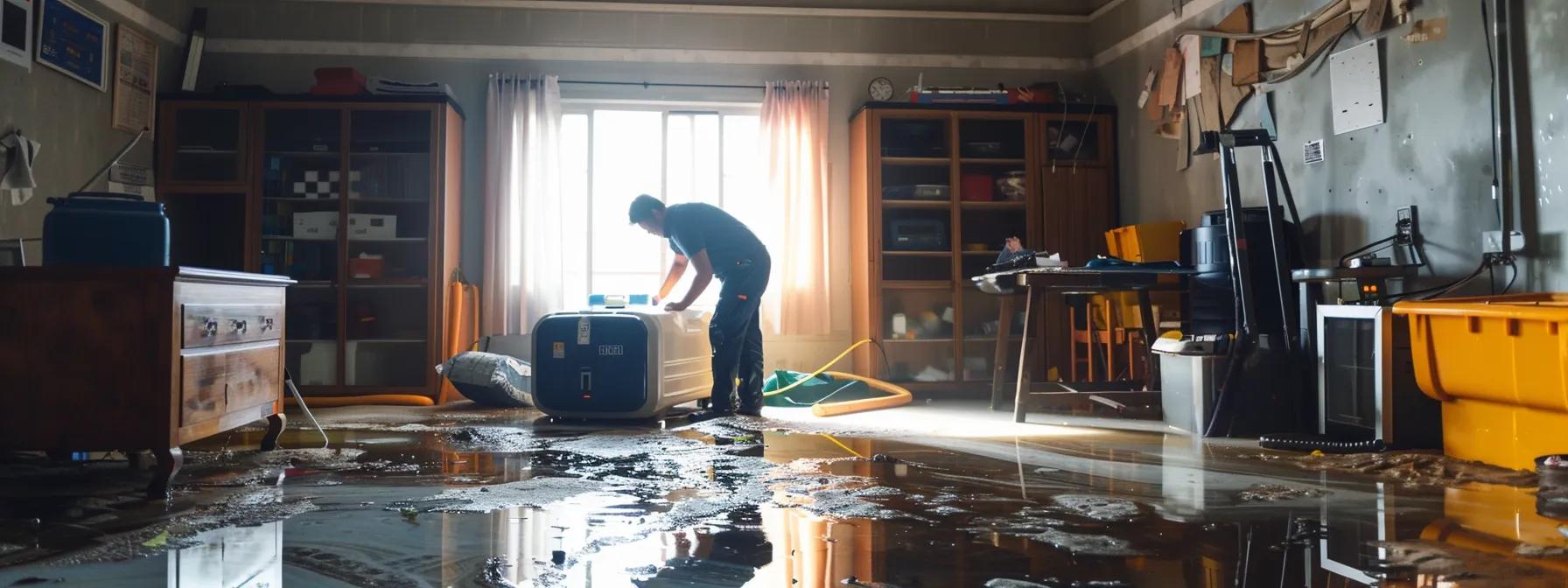
Understanding water damage categories is crucial for effective restoration because it directly influences the remediation approach and equipment used. These categories help professionals plan safe and efficient cleanup operations while also minimizing long-term structural damage and health risks. Restoration strategies change drastically based on whether water is clean, moderately contaminated, or highly contaminated, as the latter types involve additional disinfection and safety precautions. The significance extends beyond the immediate cleanup; properly addressing water damage categories can influence insurance outcomes and property value.
Restoration Approaches for Category 1 Water Damage
For Category 1 water damage, restoration primarily focuses on prompt water extraction and secure drying. Techniques for this category include using portable pumps, air movers, and dehumidifiers to remove clean water rapidly before it causes further absorption into building materials. Because the water is initially free of contaminants, the process can be more straightforward, with less need for intensive disinfection measures. However, timing is crucial: even clean water can lead to mold formation if it is not properly dried within a short timeframe. Restoration experts monitor moisture levels continuously and adjust equipment settings to ensure that residual water is eliminated. The main priority is to restore the area to its preloss condition while ensuring that any dampness left behind does not later foster microbial growth.
Addressing Category 2 Water Contamination
Category 2 water typically requires a more complex restoration approach due to the presence of impurities and contaminants. Cleaning procedures for Category 2 damage involve the removal of both water and the dissolved substances, which may include minerals, detergents, and moderate biological contaminants. This level of water often penetrates porous surfaces such as carpets and drywall, necessitating the removal and replacement of certain materials. In addition, anti-microbial treatments and disinfectants must be applied to prevent secondary contamination and mold proliferation. Restoration professionals often use industrial-grade dehumidifiers and air movers in combination with surface cleaning agents to successfully manage Category 2 contamination. Safety protocols, including the use of personal protective equipment (PPE), are critical to minimize exposure to potential health hazards.
Managing Highly Contaminated Category 3 Water Damage
Category 3 water damage involves hazardous contaminants, requiring the most aggressive and comprehensive restoration methods. The presence of pathogens, toxins, and heavy organic matter means that the affected area must be isolated immediately to prevent further spread. Restoration experts employ advanced techniques such as high-powered water extraction, vaporization, and chemical disinfection. Materials that cannot be salvaged, such as porous carpets and ceiling tiles, might need to be removed entirely and discarded according to strict hazardous waste guidelines. The process can include multiple phases of decontamination to ensure that any lingering toxic substances are neutralized. In some cases, specialized equipment like negative air machines is used to create controlled environments in which to work safely. Additionally, continuous monitoring and testing are essential to verify that all contaminants have been adequately removed before reoccupying the property.
Necessary Safety Precautions for Each Category
Safety is a paramount concern in water damage restoration. For Category 1, basic PPE like gloves and eye protection is typically sufficient due to the low risk of contaminants. In contrast, Category 2 restoration requires more advanced protection, including masks and sometimes full-body suits, as workers are exposed to chemical residues and moderate biological hazards. Category 3, being highly hazardous, necessitates strict safety protocols such as respirators, waterproof suits, and even decontamination showers. It’s imperative for restoration teams to comply with Occupational Safety and Health Administration (OSHA) guidelines and use appropriate disinfectants and antimicrobial agents to mitigate risks. The use of containment barriers and negative air machines further helps in preventing the spread of contaminants to unaffected areas. Regular training and adherence to safety standards protect both the workers and the occupants of the property.
Key Takeaways: – Restoration techniques vary by water damage category; Category 1 requires basic drying, while Category 3 demands aggressive decontamination. – Category 2 and 3 damage require additional antimicrobial treatments and often material replacement. – Safety measures intensify with contamination level, protecting workers and residents. – Timely intervention is essential to prevent secondary damage and health risks.
How Water Damage Classes Affect Cleanup Efforts
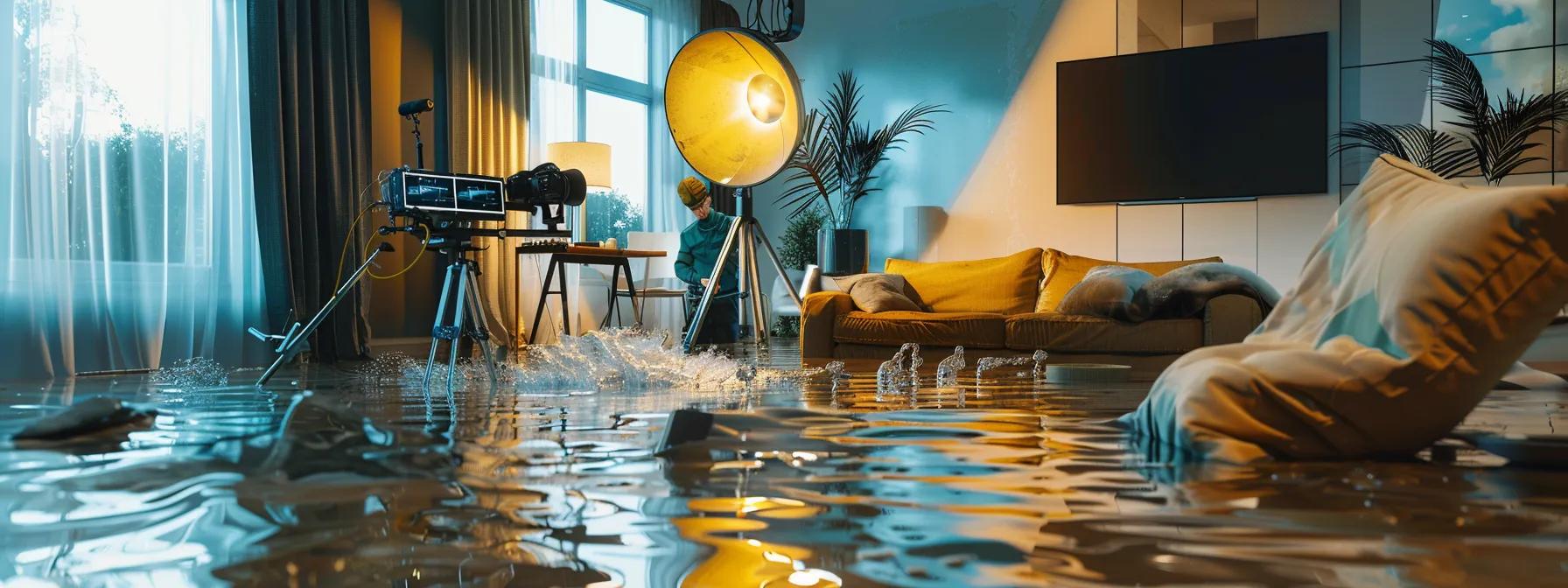
Water damage classes not only determine the extent of water absorption but also directly influence the cleanup and drying efforts required. The classification helps restoration experts decide which equipment to use, how long drying might take, and whether additional steps such as structural drying or injection drying are necessary. The cleaning approach is tailored according to the class, ensuring that both surface-level moisture and moisture locked in the materials are addressed appropriately. This systematic approach prevents further degradation of structural components and minimizes the likelihood of mold or microbial growth. Understanding the class of water damage also guides the prioritization process during restoration, particularly when dealing with multi-room or complex water damage scenarios.
Cleanup Techniques for Class 1 Water Damage
Class 1 water damage typically involves limited absorption, allowing the application of straightforward cleanup techniques. Restoration professionals begin with manual or mechanical water extraction, often using pumps, wet vacuums, and basic air movers. The aim is to quickly remove any standing water and reduce moisture levels before they spread into adjacent materials. Once the bulk water is removed, dehumidifiers and air circulation systems are deployed to dry the surfaces and prevent further absorption. The process is usually completed within a few hours if addressed promptly, with regular monitoring to ensure the moisture content drops below critical levels. This systematic approach minimizes lingering moisture, reducing the risk of mold growth and secondary damage.
Strategies for Class 2 Water Damage Scenarios
For Class 2 water damage, where a significant amount of water has spread over various porous materials, cleanup strategies are more intensive. Restoration teams use high-capacity pumps and industrial-grade extraction equipment to remove water from floors, walls, and carpets. Given that the moisture has penetrated into materials like insulation, the job often requires partial demolition and replacement of affected components. In addition to physical water extraction, the area is treated with enhanced dehumidification and heating to speed up the drying process. Restoration professionals also apply antimicrobial treatments to surfaces to prevent biological growth. The cleanup of Class 2 water damage demands a coordination of various methods to ensure that both surface and deep-seated moisture are effectively removed.
Intensive Restoration for Class 3 Water Damage
In Class 3 water damage scenarios, the cleanup efforts are at their most intensive due to the extensive water saturation. Everything from ceilings and walls to subflooring and insulation may be affected by the intrusion of large volumes of water. Restoration professionals undertake a systematic approach that includes high-powered water extraction, removal of unsalvageable materials, and multiple stages of drying with heavy dehumidifiers and industrial air movers. Given the high levels of contaminants present, sanitization and disinfection are critical components of the restoration process. Specialized drying techniques such as injection drying may be employed to reach hidden pockets of water, ensuring that the structure is thoroughly dried from the inside out before rebuilding. This level of restoration is not only labor- and time-intensive but also demands strict adherence to health and safety protocols.
Specialized Drying for Class 4 Situations
Class 4 water damage, which affects materials with low porosity, requires specialized drying techniques that go beyond conventional methods. In these cases, water has seeped deeply into dense materials like hardwood, plaster, or masonry, making it challenging to extract using standard equipment. Restoration professionals may resort to injection drying, where drying agents or heated air is injected directly into the affected material to drive out moisture. This method must be carefully controlled to avoid damaging the material further. The use of long-term dehumidifiers and moisture meters is essential to monitor the drying process, as moisture levels in these materials may take much longer to reduce. The specialized drying approach ensures that even the most resistant materials are returned to an acceptable moisture level.
Key Takeaways: – Cleanup efforts vary by water damage class, requiring different levels of equipment and techniques. – Class 1 cleanup is straightforward, while Class 3 requires intensive extraction and disinfection. – Class 4 situations demand specialized drying methods like injection drying. – Coordinated strategies are critical to addressing both surface moisture and deep-seated water absorption.
Comparing Water Damage Categories and Classes
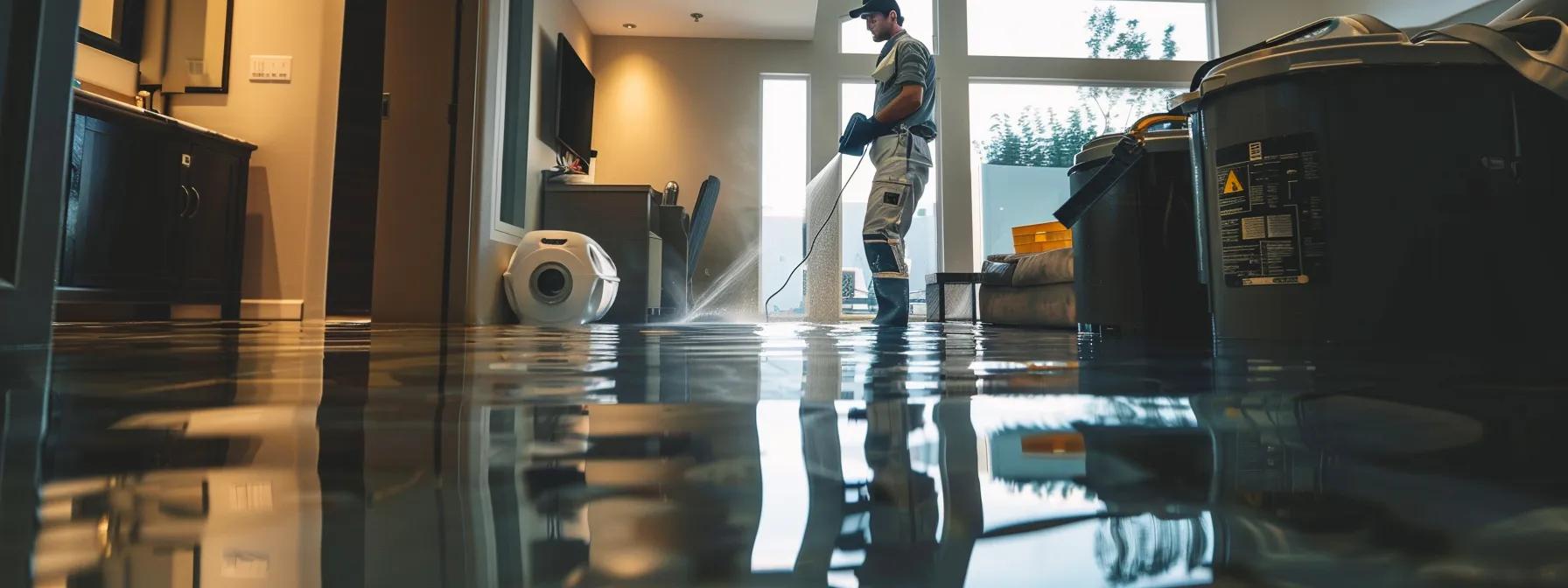
Water damage categories and classes are two distinct systems used by restoration professionals, each serving a unique purpose in the remediation process. Categories focus on the quality and contamination level of the water, while classes focus on the extent of water absorption and spread. Together, these systems provide a comprehensive snapshot of both the health risks and the structural impacts associated with water damage. Understanding the differences and interrelations between these systems is essential for developing an effective restoration strategy that addresses both immediate hazards and long-term structural integrity.
Key Distinctions Between Categories and Classes
The primary distinction between categories and classes lies in their focus. Categories assess the contamination level—from clean water (Category 1) to highly contaminated water (Category 3). In contrast, classes evaluate the extent to which water is absorbed into materials, ranging from minimal absorption (Class 1) to deep-seated water in low-porosity materials (Class 4). While a Category 1 event might correspond with a Class 1 flooding scenario, water that has been sitting in porous materials could escalate to a Class 3 situation, even if the initial water source was clean. The distinct metrics allow restoration professionals to tailor their response appropriately. For example, a high-class water damage scenario often requires specialized drying techniques even if the water itself is not heavily contaminated.
Interrelation of Categories and Classes in Assessment
Though categories and classes serve different evaluative purposes, they are interrelated. The structural damage assessed by water damage classes can be influenced by the water’s contamination level, which is determined by the category. In multiple restoration projects, professionals cross-reference both systems to make informed decisions about material removal, drying methods, and safety protocols. For instance, even a low-category water intrusion may require high-level drying measures if it is classified as Class 2 damage due to the nature of the building materials involved. This interrelation highlights the importance of a comprehensive evaluation, as the convergence of category and class data provides a full picture of both the immediate and latent impacts of water damage.
Why Both Systems Are Used by Professionals
Using both water damage categories and classes provides a dual-layered approach that enhances the efficiency of restoration operations. Categories indicate health risks and contamination levels, thereby dictating necessary disinfection protocols, while classes guide the mechanical and structural remediation processes. This combined methodology allows for a precise remediation plan, ensuring that all aspects of water damage—biological, chemical, and physical—are addressed. As a result, restoration teams can optimize the use of resources, minimize risks to occupants, and ensure quicker, more effective recovery of the property. Adoption of these systems also aids in accurate documentation for insurance claims and future risk assessments, ultimately protecting property investments more thoroughly.
Key Takeaways: – Categories focus on water contamination levels; classes measure water absorption. – The systems work together to provide a complete assessment for remediation. – Dual assessments allow for tailored cleanup strategies that address both health and structural issues. – Professionals rely on both systems for efficient restoration planning and accurate documentation.
Practical Steps for Property Owners Facing Water Damage
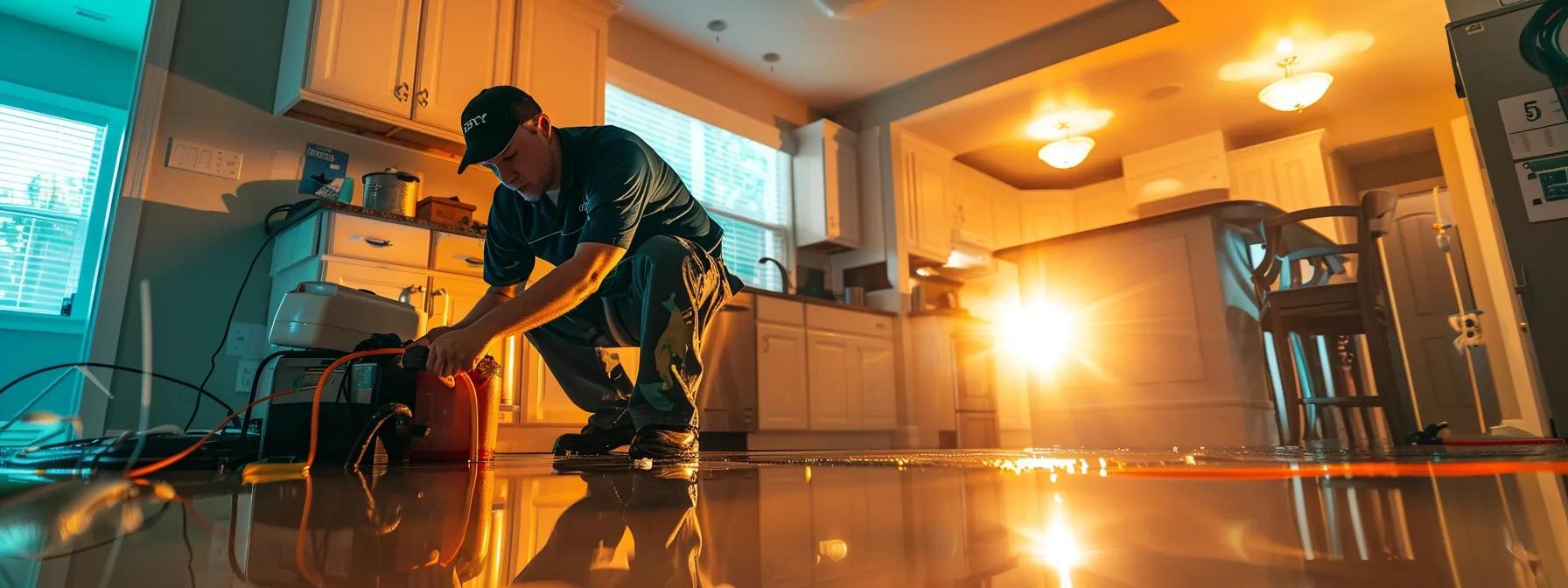
When water damage occurs, property owners need to act swiftly to minimize long-term damage and prevent health hazards. The remediation process is complex, often requiring the expertise of professional water damage restoration services. However, initial steps can be taken immediately by property owners to reduce damage. Understanding the nature of the water damage—whether it’s categorized as clean, gray, or black water—is the first step towards making informed decisions. Immediate action is essential, as delays can increase repair costs and exacerbate structural and health risks.
Initial Actions to Take When Water Damage Occurs
The first step when water damage occurs is to ensure the safety of all occupants by evaluating the source and extent of water intrusion. Turn off the main power supply if there is a risk of electrocution, and inspect the affected areas for visible signs of damage. Begin by removing any standing water with a mop, wet vacuum, or bucket, and try to keep the area well-ventilated by opening windows and doors if weather permits. Document the damage with photographs and written descriptions for insurance purposes. It is also advisable to contain the spread by using barriers where possible. Immediate attention should also be given to any potentially contaminated water sources, such as sewage backups, by avoiding contact until professionals arrive.
When to Call Professional Water Damage Services
Professional intervention is necessary when water damage is extensive or when the water involved is contaminated. In cases of Category 2 or Category 3 damage, where impurities or hazardous contaminants are present, homeowners should immediately contact restoration experts who have access to specialized equipment and expertise. Complex scenarios, including flooding that has saturated structural materials or where there is significant mold risk, require professional assessment and action. Experts will perform comprehensive moisture mapping, use industrial dehumidifiers, and apply antimicrobial treatments to ensure complete remediation. Homeowners should not attempt to clean heavily contaminated water on their own, as improper cleanup can lead to serious health risks and further deterioration of the property.
Communicating Effectively With Restoration Teams and Insurers
Once professionals are contacted, clear communication is crucial. Provide restoration teams with detailed accounts of the event, including the suspected water source, the duration of exposure, and any prior incidents. Accurate documentation eases discussions with insurance adjusters and supports timely claims processing. Maintain a detailed log of all interventions and expenses related to the incident. Effective communication helps ensure that the restoration process is thorough and that all parties are aligned on the necessary steps, timelines, and safety protocols. This collaborative approach can significantly enhance the speed and effectiveness of the remediation efforts.
Preventing Future Water Damage Incidents
While immediate remediation is critical, property owners can reduce the risk of future water damage through preventive measures. Regular inspections of plumbing, roofing, and drainage systems help identify potential issues before they lead to significant damage. Installing water leak detection systems and sump pumps can provide early warnings and mitigate damage. Additionally, proper maintenance and timely repair of issues in sanitary sewer lines and septic tanks can prevent water contamination, which may otherwise escalate into severe water damage. Homeowners should also consider periodic evaluations by professional restoration experts to assess risk and update their emergency response plans. By taking preventive steps and integrating modern technology, homeowners can limit the probability of recurring incidents and protect both their home and health.
Key Takeaways: – Immediate action is essential; start with safety and basic water removal. – Professional services should be called for extensive or contaminated water damage. – Effective documentation and communication with professionals and insurers expedite the process. – Preventive maintenance can reduce the risk of future water damage incidents.
Frequently Asked Questions
Q: What are the main differences between water damage categories and classes? A: Water damage categories focus on the level of contamination in the water—from clean (Category 1) to highly contaminated (Category 3)—while classes assess how far water has absorbed into structures, ranging from minimal absorption (Class 1) to deep-seated moisture (Class 4). Both systems are used together to determine the appropriate restoration strategy.
Q: How quickly should remediation start after water damage occurs? A: Remediation should ideally start within one hour of water exposure. Immediate action is crucial to minimizing secondary issues like mold growth and structural degradation, and it helps keep restoration costs lower.
Q: Why do some water damage scenarios require specialized drying techniques? A: Specialized drying is necessary when water has deeply penetrated dense materials, such as hardwood or masonry (Class 4 damage). Standard dehumidifiers may not effectively remove moisture trapped inside, so techniques like injection drying are recommended.
Q: What personal protective equipment (PPE) is needed for different water damage categories? A: For Category 1 scenarios, basic PPE like gloves and eye protection are sufficient. As contamination increases to Category 2 or 3, more extensive PPE such as respirators, waterproof suits, and decontamination gear is required to protect against health hazards.
Q: How can I prevent water damage in my home? A: Preventive measures include regular maintenance of plumbing, roofs, and drainage systems, installation of leak detection devices and sump pumps, and periodic professional inspections. These steps help to identify and fix issues before they lead to significant water damage.
Q: What is the role of insurance in water damage restoration? A: Insurance plays a crucial role by covering damage costs and restoration services. Proper documentation of water damage and timely reporting to insurers are essential for a smooth claims process. Homeowners should review their policies to understand the extent of coverage and any necessary documentation.
Final Thoughts
Understanding water damage categories and classes is essential for anyone facing water damage in their home. By knowing the differences between contamination levels and absorption rates, property owners can take appropriate actions to mitigate damage. Professionals use these systems to guide their restoration strategies, ensuring safety and structural integrity. Homeowners should prioritize preventive measures, document incidents meticulously, and communicate clearly with both restoration teams and insurers to safeguard their properties effectively.


